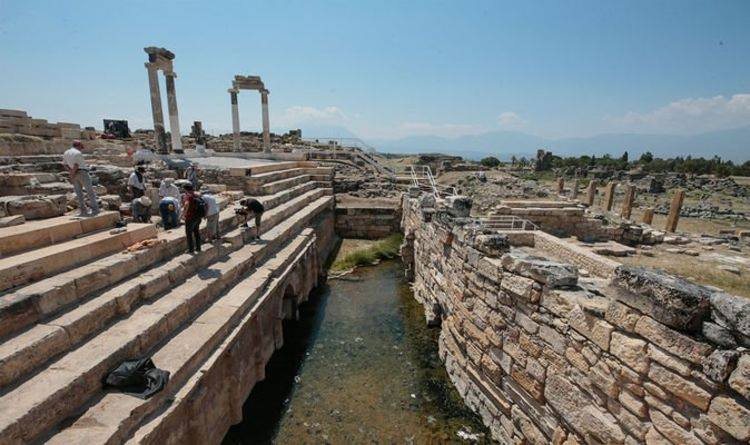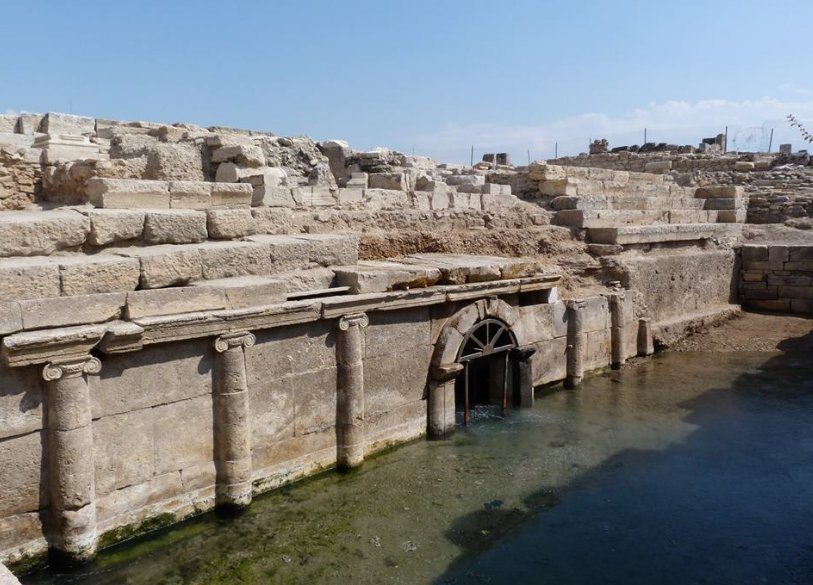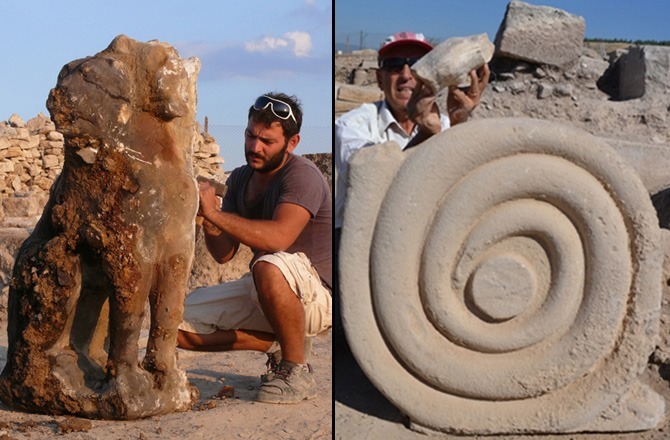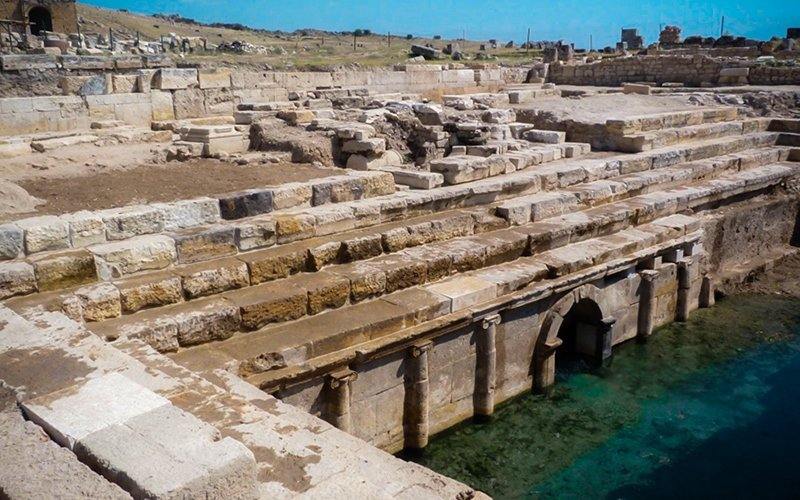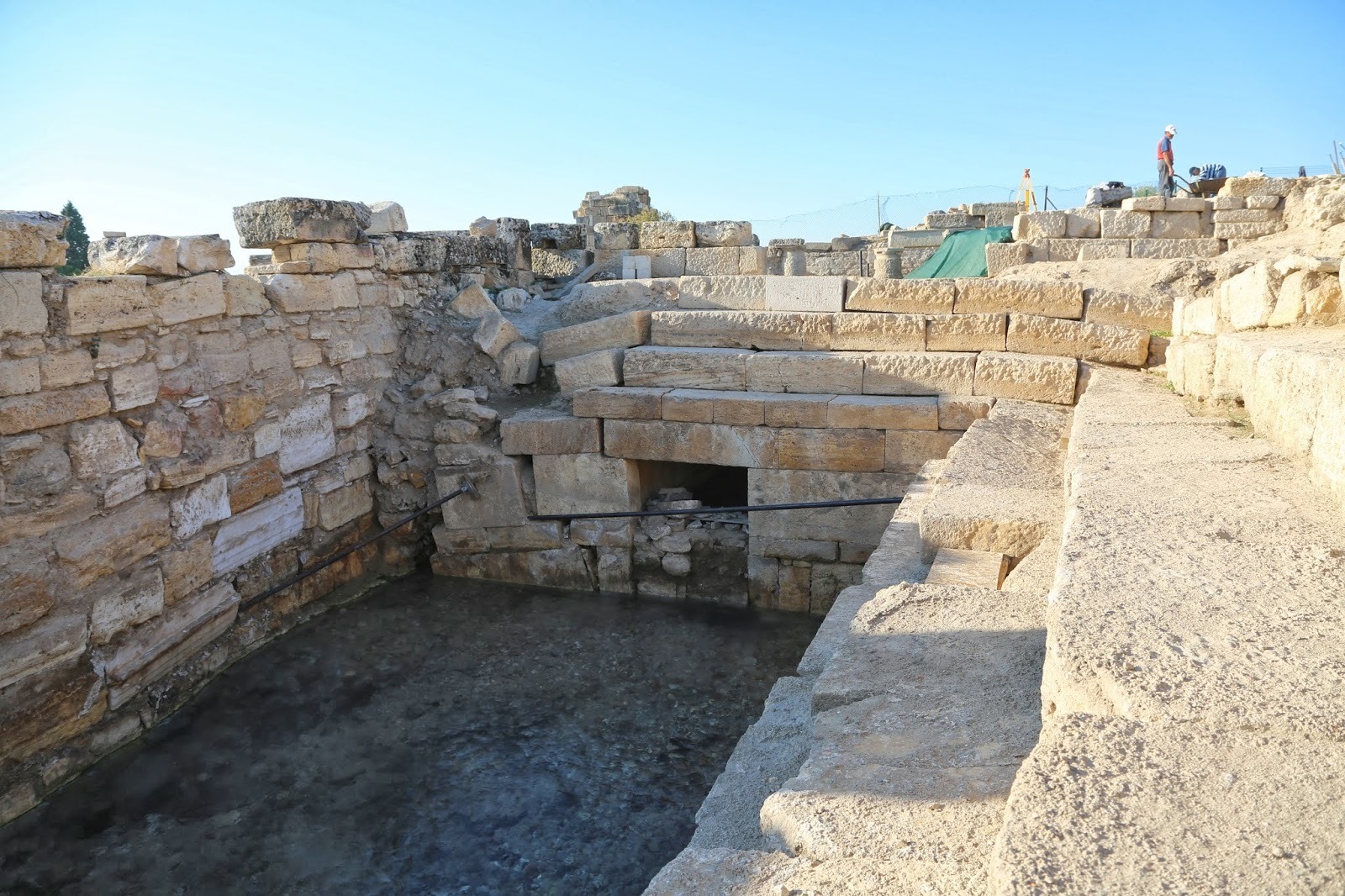Hell’s Gate (Plutonion), Hierapolis, Türkiye.
The Plutonion, also known as Pluto’s Gate, was a religious location devoted to the Greek god Pluto in the ancient city of Hierapolis near Pamukkale in the Denizli Province of modern-day Türkiye. The cult-center is situated between the Roman theatre of Hierapolis and a nymphaeum. It is a complex of structures frequently called the temple of Apollo and the Plutonion i.e. the sanctuary of the Greek god of the underworld.
The site was discovered in 1965 by Italian archaeologists and excavated for a decade.
The gate was built into one wall of a rectangular, open-aired arena, topped by a temple and surrounded by raised stone seating for visitors. The city itself sits in one of the region’s most geologically active areas. A deep fissure running beneath Hierapolis constantly emits volcanic carbon dioxide (CO2), which pours forth as a visible mist. The gate is built directly above it. In 2011, archaeologists showed that the gate is still deadly: birds that fly too close suffocate and die.
The Plutonion was described by several ancient writers including Strabo, Cassius Dio and Damascius. The ancient historian Strabo described the gate as follows: “Any animal that passes inside meets instant death. I threw in sparrows and they immediately breathed their last and fell”.
The Hierapolis Plutonion was built in honor of Hades-Pluto and his wife Kore-Persephone during the early Imperial period, between 100 BC and AD 100.
The sanctuary was built over a natural cave that released hot waters and toxic volcanic carbon dioxide (CO2), which was emitted as a suffocating invisible mist believed to have been sent by Pluto, the god of the underworld.
The cave was used for rituals by Galli, the eunuch priests of the goddess Cybele, who descended through the “gate to hell” into the chamber to demonstrate their divine protection and sacrifice.
The gateway was built into the wall of an open-air arena, which was surrounded by raised spectator seating known as a theatron. The gas released from the cave settled on the arena floor and grew in concentration throughout the night, eventually forming an asphyxiating CO2 “lake.” Scholars believe that the arena was used for animal sacrifices, which were carried out at dawn before the sun’s heat dissipated the CO2 concentration. Sacrificial animals were not tall enough to keep their heads fully clear of the CO2 lake, and as they became dizzy, their heads would have dropped even lower, exposing them to higher CO2 concentrations and leading to death by asphyxiation. The priests, however, were tall enough to keep their heads above the dangerous gasses.
During the restauration above the rectangular pit, on the northern side of the theatron, a replica of the colossal statue of Hades, god of the Underworld and his three headed dog Cerberus (Kerberos) has been placed in its original setting. Directly below the platform carrying the staues of Hades or Pluto and his dog Cerberus, in the entrance to the natural cave from which the toxic gases and water flows. The entrance to the cave, which is the source of water flowing into the rectangular basin like structure, was decorated by the arch and framed by semi-columns. Directly above this arched entrance a Greek dedicatory inscription was discovered; which reads “”Ploutoni kai Kore”. The inside of the Plutonion is a subterranean chamber, totally dark but very humid, with a warm, carbonate-rich stream flowing below.
Archaeological evidence suggests that the site was fully functional until the 4th century AD, but remained a place of sporadic visitation by visitors for the next two centuries. The temple was destroyed in the 6th century AD by earthquakes.
Hits: 6
